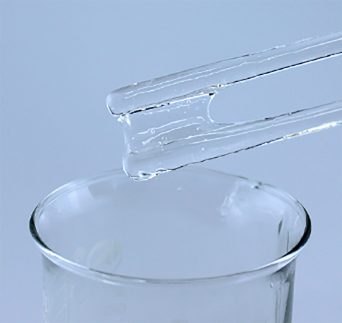
Dec . 06, 2024 20:51 Back to list
is hpmc water soluble
HPMC A Water-Soluble Polymer with Diverse Applications
Hydroxypropyl methylcellulose (HPMC) is a modified cellulose derivative that has gained significant attention across various industries due to its unique properties, particularly its water solubility. As a non-ionic, cellulose-based polymer, HPMC plays a crucial role in formulations ranging from pharmaceuticals to food products and beyond. This article explores the water-soluble nature of HPMC, its benefits, and its diverse applications.
Understanding HPMC
HPMC is synthesized from natural cellulose, which is inherently insoluble in water. Through a chemical modification process involving hydroxypropyl and methyl groups, HPMC transforms into a water-soluble compound. The degree of substitution of the hydroxypropyl and methyl groups can be adjusted during production, which affects the polymer’s solubility, viscosity, and gel-forming properties. This ability to tailor the characteristics of HPMC makes it a versatile ingredient in numerous applications.
Water Solubility and Its Importance
The water solubility of HPMC allows it to disperse easily in aqueous solutions, forming clear and viscous gels or thickening agents. This property is particularly valuable in industries where consistent texture and stability are required. HPMC’s solubility in water is influenced by factors such as temperature, concentration, and pH, making it an adaptable material for various formulations.
One of the primary benefits of HPMC is its ability to provide a controlled release of active ingredients in pharmaceutical applications. As a component in drug formulations, it acts as a binder, film-former, and controlled-release agent. The water-soluble nature of HPMC enables effective delivery of medications, ensuring that active compounds are released at the desired rate, thereby enhancing the therapeutic efficacy of the formulation.
Applications in Pharmaceuticals
is hpmc water soluble

In the pharmaceutical industry, HPMC is widely used in tablet formulations. It serves as a binder in dry powder granulation and as a film-coating agent for tablets, which protects the active ingredients from degradation while enhancing the product's aesthetic appeal. Additionally, HPMC is employed in oral drug delivery systems, including immediate-release and sustained-release tablets. Its unique properties allow for a precise control over drug release profiles, which is critical for ensuring optimal therapeutic outcomes.
Food Industry Utilization
In the food industry, HPMC is utilized as a thickening agent, emulsifier, and stabilizer. Its ability to form stable emulsions and maintain product consistency makes it an essential ingredient in sauces, dressings, and dairy products. Moreover, HPMC is often used in gluten-free baking as a substitute for wheat flour, providing the necessary texture and moisture retention. The water solubility of HPMC is beneficial in food applications, as it can easily dissolve in water, dispersing uniformly throughout the product.
Cosmetic and Personal Care Products
The cosmetic industry also leverages the benefits of HPMC. Due to its emulsifying and thickening properties, HPMC is a popular ingredient in lotions, creams, and gels. Its water-soluble nature ensures that formulations remain smooth and stable, improving the sensory experience of the end product. Additionally, HPMC functions as a film-former in cosmetics, enhancing the longevity and wear of makeup products.
Conclusion
HPMC is a remarkable water-soluble polymer that has found its niche in various industries, including pharmaceuticals, food, and cosmetics. Its versatility stems from its ability to be customized for different applications, making it an invaluable asset in formulation development. As the demand for innovative and effective products continues to grow, the importance of water-soluble compounds like HPMC will only increase, highlighting its relevance in modern manufacturing processes. As research and development in polymer science advances, it is likely that new applications and enhancements for HPMC will emerge, solidifying its role as a critical component in many formulations.
-
Versatile Hpmc Uses in Different Industries
NewsJun.19,2025
-
Redispersible Powder's Role in Enhancing Durability of Construction Products
NewsJun.19,2025
-
Hydroxyethyl Cellulose Applications Driving Green Industrial Processes
NewsJun.19,2025
-
Exploring Different Redispersible Polymer Powder
NewsJun.19,2025
-
Choosing the Right Mortar Bonding Agent
NewsJun.19,2025
-
Applications and Significance of China Hpmc in Modern Industries
NewsJun.19,2025







